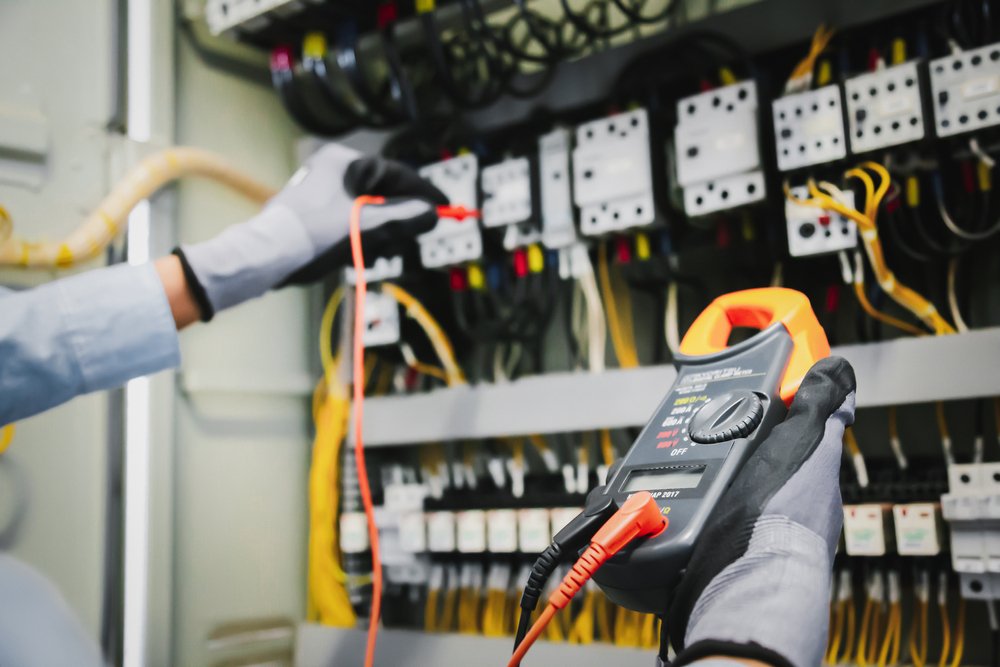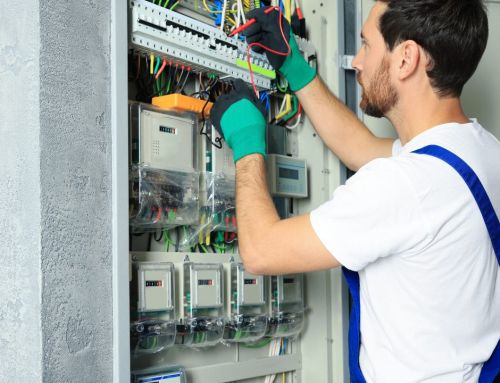
Electrical Testing
There are two types of electrical testing and a complete comparison of both testings is done below
Visual Inspection
The visual inspection is a basic examination to spot any obvious telltale signs of electrical issues, damage, or wear and tear. No in-depth circuit testing will be done, so your electricity should stay on during the assessment. The electrician will need access to all rooms in your home. Based on the property’s size, the report shouldn’t take longer than an hour to finish. The technician carrying out the inspection will take notes and provide a Visual Inspection Report (VIR) at completion.
The checklist below outlines everything that will be looked at and included in the Visual Inspection report, which offers an overview of the installation’s condition. Recordings and recommendations will be based off of these observations.
Below is a list of things to look out for when examining your home’s electrical safety:
- The consumer unit (main fuse board)
- Sockets and plugs
- Light fittings and switches
- Electrical cables or leads
- Earthing and bonding around the home
- Extension lead usage in the kitchen and bathroom specifically as these areas may be more humid than other parts of the house. Be on the lookout for any visible wear and tear, burning, or scorching as well as make sure there is RCD protection present in your home.
Note; This Report is not accepted by councils in the Uk or any of the estate agents for the purposes of renting your residential property
Electrical Installation Condition Report (EICR)
An EICR or electrical testing will give you a comprehensive overview of the state of your home’s electrics and whether it meets the current British Standard for electrical safety (BS 7671). The observations made will be in line with BS 7671, and where improvements could be made to benefit safety, various recommendations will be given. After the Electrical testing is done, the registered contractor will hand over a certificate that outlines everything about the condition of your electrical installation.
Electrical testing typically provides codings that show the condition of the installation. The codes are as follows:
Code C1 – This code indicates that immediate action is needed because people using the installation are in danger.
Code C2 – Although there isn’t an immediate danger, this code shows that a problem could occur if something went wrong with the equipment or connection.
Code C3- signifies that an identified issue isn’t currently hazardous but amending it would greatly improve the safety of the electrical installation.
Code F1- The report can sometime contain F1 code which means further investigation, for example if the property has high ZE value or the lights in the property are flickering.
You are under an obligation to have any of the C1 and C2 and F1 issues fixed, though it is recommended that corrective action to rectify C3 is completed as soon as possible. If you do wish to have work carried out we recommend you get quotes for any remedial work from the company who has completed the electrical testing report for you as their electrician has been to your property, understands your property well, and will be able to give you a cheap and effective quote.
Advantages of an Electrical Testing Report
After a careful inspection, electricians or engineers can tell if an electrical system is free of damage, wear and tear, and deterioration. They can also spot whether installation equipment is properly installed- thus guaranteeing the safety of everyone on the property.
Electricians play an important role in keeping homes and businesses safe. They regularly inspect electrical systems for damage or wear and tear that could create safety hazards. When they find problems, they recommend repairs to make sure the system is functioning properly.
The Institution of Engineering and Technology separates Criteria for electrical installations into two distinct parts: Wiring Regulations and Building Regulations. The wiring regulations set the standards for what an electrical installation should meet, including the switchgear, control gear, earthing of wires and cables, condition of sockets, etc.
If the consumer unit is RCD Protected electrical testing will help identity which electrical appliances in your home are old and could cause shocks or fires, so that you can repair or replace them.
Electrical testing is also useful for documenting the condition of an electrical installation, to be used in future inspections. This way, you have proof that you took the measures necessary to ensure the safety of your tenants (Residential property), customers, and employees (Commercial & Industrial Properties) in case an accident occurs.
Note: If you are renting out your property it is mandatory you get electrical testing- Electrical Installation Condition Report done for the property before the tenancy agreement starts.
If you are buying a property it is recommended you get electrical testing- Electrical Installation Condition Report done for the property before buying the property as the report will help you understand any existing electrical faults in the property, either you can then ask the seller to rectify the faults before the completion of sale or you can negotiate the asking price.
How Long an EICR-Electrical Installation Condition (Electrical Testing) Report last?
- BS7671 states that the maximum pass report an inspector can give to a rented residential property is 5 years.
- BS7671 states that the maximum pass report an inspector can give to a rented commercial property is 5 years.
- BS7671 states that the maximum pass report an inspector can give to a rented industrial property is 3 years.
Although this is only a maximum recommended timeframe as per BS7671 if the property installation being inspected is in good condition and up to code.
However, if the property installation being inspected is in Fair Condition and up to code, the Electrical Testing-Electrical Installation Condition Report can pass anywhere from 1-5 years.
Electrical Testing- Electrical Installation Condition Report is either a Pass (Satisfactory) or Fail (Unsatisfactory).
If the report is a Pass (Satisfactory) the BS7671 states that the maximum pass report an inspector can give to a rented residential/commercial property is 5 years, and for industrial properties is 3 years, although this is only a recommended timeframe if the property installation being inspected is in good condition and up to code. However, if the property installation being inspected is in Fair Condition and up to code, the EICR-Electrical Installation Condition Report can pass anywhere from 1-5 years.
Who Can Perform an EICR-Electrical Installation Condition Report at your Property?
Electricians who have Level 3 periodic qualifications for Testing and inspections are certified to do an EICR test. Any Electrician who has level 3 testing and inspection qualifications, he/she Will either be NAPIT or NICEIC Registered. Most Councils and estate agents require EICR Report carried out by an NICEIC Contractor.
We are NIECIE Contractors and can help you get an EICR Report.
Our Pricing
| Our Electrical Safety Certificate Prices |
|---|
| Studio Apartment £67.99 |
| 1 – 3 Bedroom £81.99 |
| 4 Bedroom £89.99 |
| 5 Bedroom £98.99 |
Check Out Our Other Services
| EICR | Commercial EICR | Emergency Light Certificate |
|---|---|---|
| Electrical Diagnostic | PAT Testing | Fuse Box Installation |



